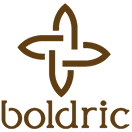
The Truth About Chef Coats: What Fabric, Fit, and Features Really Matter
Share
In the kitchen, heat is unavoidable, but discomfort need not be. Plating dainty pastries or leading a frantic dinner service, your chef coat is not a uniform; it's part of your act. Making the right choice can be the difference between feeling constricted and feeling invincible.
From the best fabric for chef coats to smart design details, we’re diving into the real elements that matter when choosing professional chef coats.
Why Does the Right Fabric Matter?
The foundation of any good coat is its fabric. As far as the best fabric for chef coats goes, durability, comfort, and breathability are all in. Cotton has been a classic go-to for softness and natural airflow, while polyester blends gain points for wrinkle resistance and moisture management.
A chef coat material guide will tell you this: kitchens are hot, stressful places. Which is why breathable chef uniforms are out of the question. Look for fabrics that strike a balance between air circulation and structure; you'll be cool without sacrificing that crisp, professional look.
The Fit Factor
- If your chef coat is the incorrect size, then that is an issue.<
- A good chef coat fit guide is one that emphasizes functionality over everything else.
- You need room to chop, stir, bend, and reach without not being able to move.
- Chef coat fit and size fits suggests a looser fit around the shoulder and chest.
- Sleeves should split just above the wrist to allow free movement of the hands.
- A constrictive coat will hold you back.
- A badly fitting coat might be in the way; both are recipe killers.
Key Features to Look For
Chef coat technology today is more intelligent work, not necessarily hard work. Arm vent panels on the inside? You're going to need them for ventilation. Moisture-wicking chef coats? They'll stick with you for a double shift.
Storage is a plus, too, tasting spoons, thermometers, and pens in deep pockets, the small things that matter. When buying chef coat functional details, look for reinforced buttons, double-breasted fronts, and sleeve pockets for quick tool access.
Here’s what you should know before choosing:
- Style in the Kitchen
Function is most important, but style is your tiara. Chef coat styles and designs are now differing from traditional white double-breasted classic silhouettes to new, fitted designs in bold colors. Black, gray, and even printed fabrics are infiltrating kitchens without losing professionalism.
- Personalized Embroidering
Monogrammed embroidery of your name or restaurant name also brings professional chef coats from problem-chic to bespoke. And let's be real, if you look good, you feel good. And if you feel good, you feel confident. And that confidence translates to every plate that leaves your kitchen.
- Fabric Performance in Action
This is where the chef coat fabric guide meets reality in the rush of the actual kitchen. Cotton dominant coats are airy but may require a bit more ironing. Polyester blends are wrinkle- and stain-resistant champions but may retain more heat unless vents are designed into the garment.
- Clothes Made for Warmth
This is where hybrid fabrics excel, blending the softness of cotton with the durability of polyester to produce the ideal fabric for high-stress chef coats. Add in moisture-wicking and you have a winner for summer shifts and blistering kitchens.
- Choosing Based on Your Work Environment
All kitchens are not the same. A pastry chef in a cold bakery may like chunky cotton for warmth, while a grill master at a high-volume steakhouse may like vented chef uniforms with mesh.
This is why kitchen workwear for chefs has to be chosen according to your station, your function, and your comfort level. Your coat should be a friend, not a foe.
- Fit + Features = Your Perfect Coat
The perfect coat is not about doing one thing; it's the sum of its parts. The perfect chef coat fit guide means you're able to move. The perfect chef coat features functionality that means you get the job done.
Place them all together, and you've got a uniform that isn't merely clothing, it's part of your trade.
Sizing Recommendations Before You Buy
- Measure yourself first while you shop, especially chest, sleeve, and waist.
- Review the chef coat sizing and fit guidance on each product page of a brand.
- Do consider shrinkage when buying 100% cotton.
- Try on different styles and sizes of chef coats to find the most comfortable one.
Conclusion
Your chef coat is your shield in the kitchen, a combination of material, fit, and function that helps with every step you make. Invest in professional chef coats that prioritize comfort, wear, and personal preference. Whether you need moisture-wicking chef coats for warm shifts or a fitted fit that has you chopping sharp through service, having it just so will elevate your performance to the next level. Explore our carefully curated selection of professional chef jackets here https://www.boldric.com/collections/chef-coats
